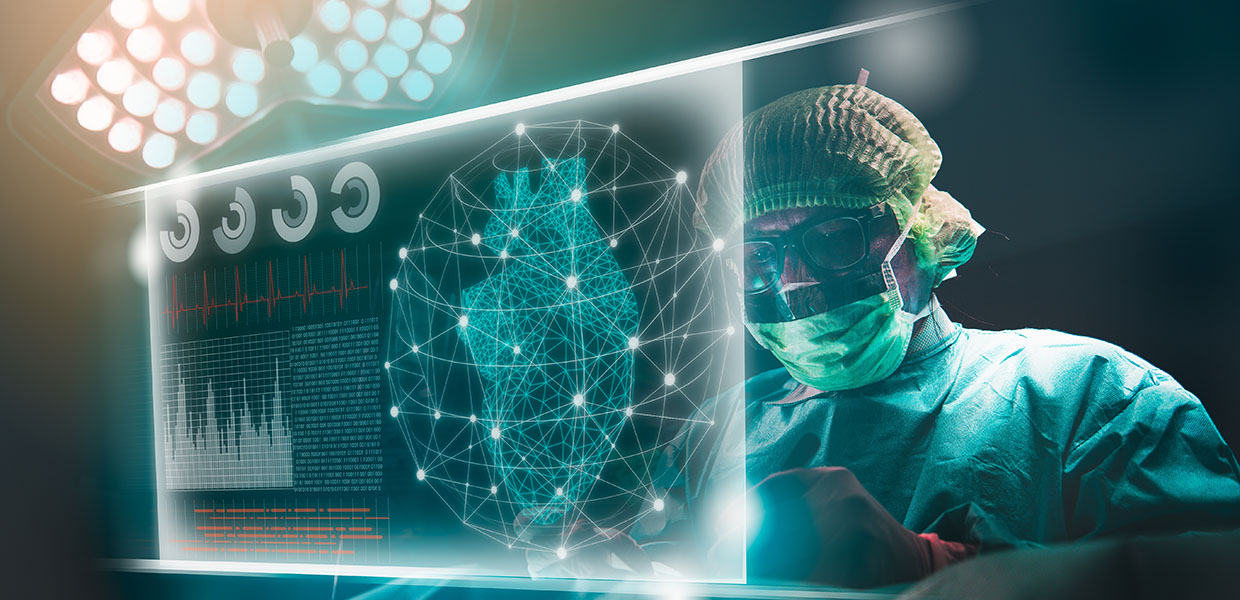While advanced artificial intelligence and analytical tools are widely used in a number of industries to streamline business processes and create personalized services for end-users, the data revolution in healthcare is still coming of age.
Adopting a data-first mindset in healthcare may unlock a number of opportunities. It has the potential to improve patient experience and personalized medicine, shift providers’ approach from reactive to proactive care, and create opportunities to improve the environment and optimize efficiency.
Achieving Optimal Patient Care Through the Shift to Virtual Medicine
In many industries, data is already the driving force behind many processes and models. In the medical world, people and human interaction are still dictating many care processes. But, is this the most efficient way to achieve optimal patient care?
Can a diagnosis be made based on an algorithm?
Before this question can be answered, providers should ask – will less human influence be acceptable when it comes to deciding the future of patient care? Algorithms are already supporting doctors and nurses in other ways; Clinical Decision Support Systems (CDSS), for example, have been in use for quite some time, helping to process data to better guide treatment approaches. Applications like these are likely to become more sophisticated and play a larger role in guiding patient care as predictive analytics accelerate.
Contact with the doctor virtually?
Individuals have happily embraced video calls with family members and friends for years. Visiting the doctor, however, remained the exception to their readiness to connect virtually up until recently. Many preferred visiting a doctor in person rather than taking advantage of telemedicine options until the COVID pandemic and social distancing practices caused patients around the world to seek out virtual methods of connecting with their healthcare providers. In fact, one survey showed that patients’ openness to virtual care has spiked over the last three years across clinical scenarios – from refills to ongoing care to consultations to pre/post-operative care.
Telemedicine may promote greater patient satisfaction through its ability to eliminate time in a waiting room, and instead, meet with a doctor from the comfort of your living room. It may also help introduce more patients into the care system by making appointments with a doctor more accessible – particularly for those living in rural areas without convenient access to an office. In addition, by diagnosing and providing treatment plans virtually for certain ailments, it may reduce hospital throughput times for more urgent treatment needs.
From Reactive Care to Proactive Prevention
Data has the potential to be the driving force behind the shift from a reactive, demand-oriented care landscape to a proactive, prevention-oriented sector.
From “I call the doctor” to “The doctor calls me”
More than 230 million wearables (mainly smartwatches and fitness trackers) are expected to be sold globally this year according to CCS Insight. These wearables can perform a number of preventive health functions, such as measuring heart rate and how much someone moves. By then linking this data to other apps, it may create an even more detailed and well-rounded picture of total body and health information.
A doctor or general practitioner can then view the personal (and increasingly sophisticated) wearable data and identify abnormalities through the help of algorithms. Then, if needed, the doctor can proactively take action and invite the patient for further investigation. This is the foundation of a strong preventive approach. In addition, remote monitoring may help reduce the number of doctor visits, as people begin to feel more confident in understanding their own health data, only making appointments when they are truly needed.
Fewer Hospital Visits Create Potential for Sustainability and Operational Improvements
A data-driven healthcare sector may lead to a sharp decrease in the number of healthcare-related transports.
From driving to clicking
Aside from hospital visits taking a fair amount of time, trips to the hospital – via car or ambulance – take a lot of fuel, too. By decreasing the number of physical trips to healthcare facilities, it may help to improve the environment and create opportunities to improve operational efficiency:
- Reduced carbon emissions, as a result of fewer healthcare-related transports
- Hospitals and parking lots can be smaller, leaving more available land
- Less money goes into the maintenance of healthcare real estate
Instead of investing money in expensive healthcare real estate, available resources may be used for innovation and the implementation of new, cost-saving technologies. In its draft Global Strategy on Digital Health, the World Health Organization (WHO) stated that increasing the use of and investment in healthcare technologies is essential to making care affordable and accessible on a large scale.
The Challenges
Before the healthcare data revolution can truly be unlocked, there are several hurdles to overcome.
For starters, there is a need for more education to nurture the data-related skills that the next generation of healthcare professionals will need. For example, many health professionals will enter large amounts of data into electronic health record systems, which are crucial for data collection, documentation and transmission. However, most nursing and medical schools don’t teach those skills and, especially for those born in older generations, many doctors, nurses and physician assistants find it challenging to adapt.
Cybersecurity and privacy present another challenge. Securing vast amounts of personal data is very involved, and it requires complex measures to protect it from hacks or ransomware attacks. Providers and patients may be hesitant to widely adopt the notion of allowing their data to be shared until they feel absolutely certain it is secure and anonymous.
Despite these challenges, healthcare data has enormous potential in transforming the quality of patient care and unleashing the true potential of personalized medicine.


